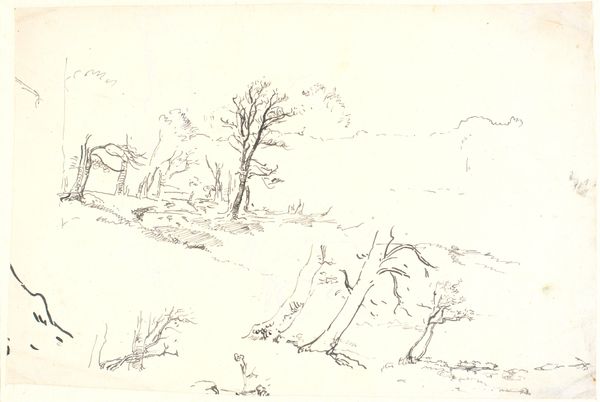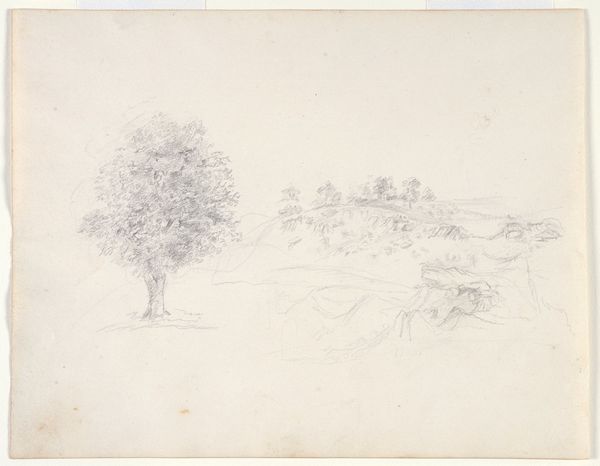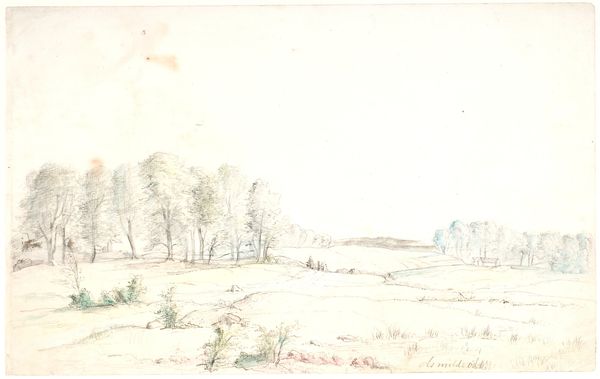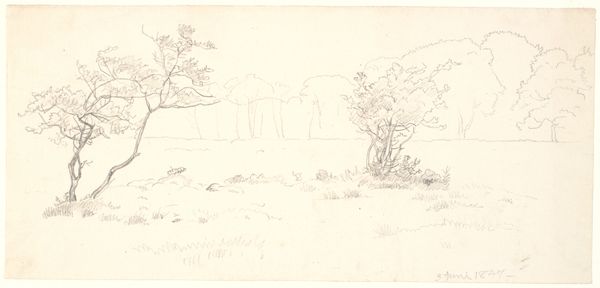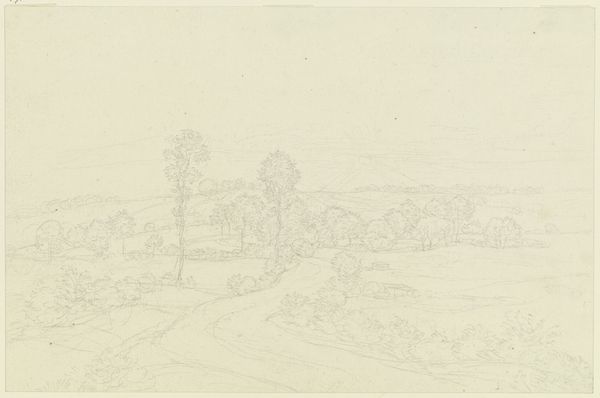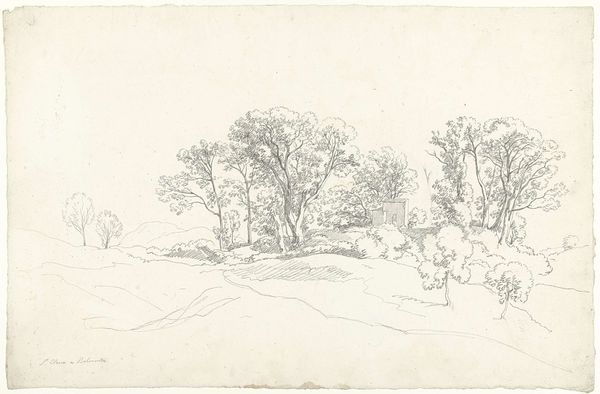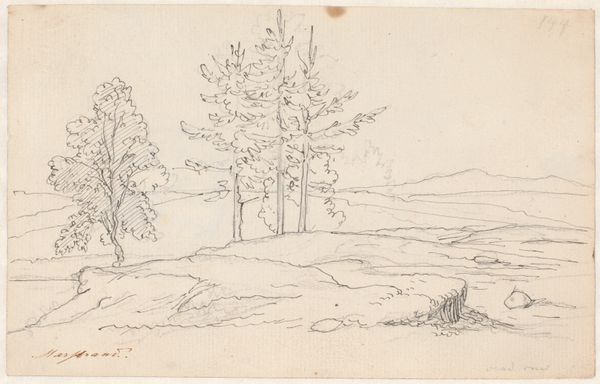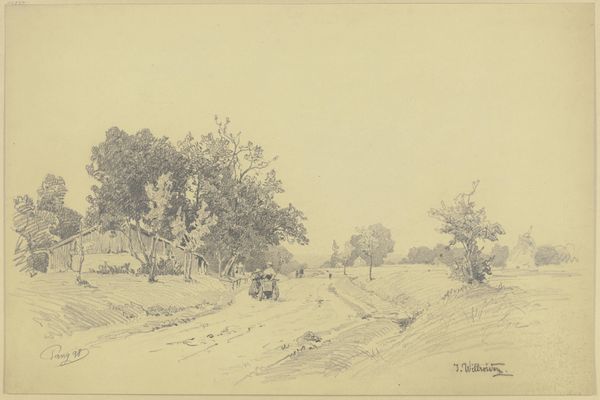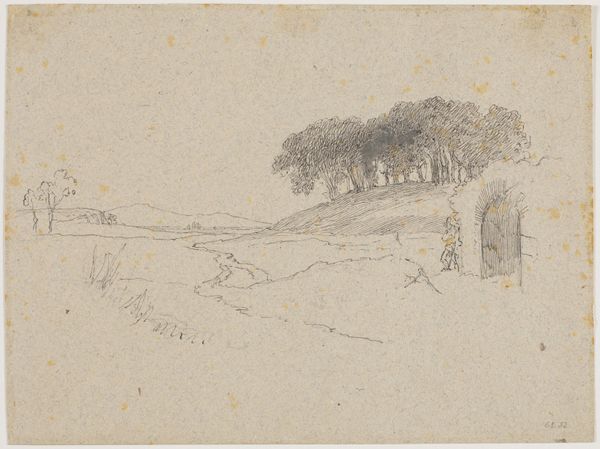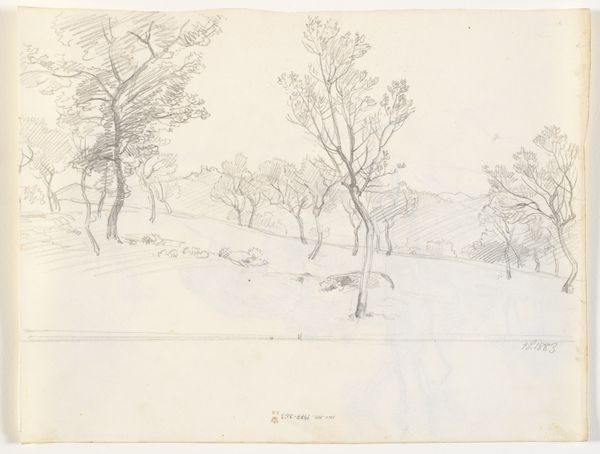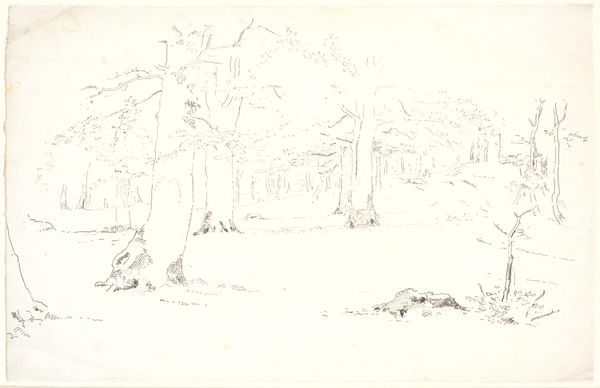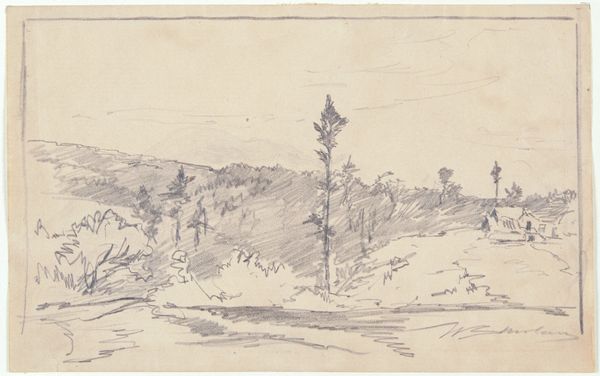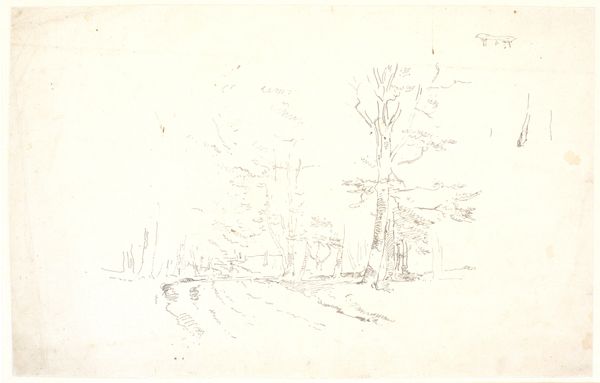
drawing, pencil
#
drawing
#
landscape
#
romanticism
#
pencil
Dimensions: 216 mm (height) x 346 mm (width) (bladmaal)
Editor: We’re looking at P.C. Skovgaard's "Landscape with Trees," created in 1840. It's a pencil drawing, and the detail is incredible, almost photographic. What strikes me is the simplicity of the subject matter. How would you approach interpreting this work? Curator: Well, let’s start with the material itself: pencil on paper. In 1840, paper wasn't cheap, and good pencils represented a degree of specialized manufacturing. This isn’t some fleeting sketch on a scrap; it's a deliberate act using crafted materials. Notice how Skovgaard uses hatching to create light and shadow. It is a labor-intensive process, demanding both time and skill. Editor: So, you're focusing on the deliberate choices of the artist. The control they exert, almost? Curator: Precisely. What did it mean to painstakingly depict this specific landscape? Was it simply observation, or something more? Think about the social context: landowners, agricultural practices, the very idea of "landscape" as property and resource. Editor: I see your point. It’s easy to overlook the connection between art and, say, land ownership, but of course it's there. This isn't a grand, idealized vista. It shows nature being quietly used and shaped. Curator: And it speaks to the way "Romantic" artists often chose humble subjects – ones relatable to an emerging middle class increasingly interested in land, but without aristocratic claims to vast estates. What are your thoughts on this detail? Editor: That's a fascinating lens. I guess I never thought about pencils as anything more than simple tools. Looking closer at the artist's material constraints does help us interpret the work and its role. Curator: Indeed. By examining these choices of materials and production, we uncover a richer understanding of Skovgaard's artistic vision, its engagement with social themes, and its place within a developing market for both land and art.
Comments
No comments
Be the first to comment and join the conversation on the ultimate creative platform.
